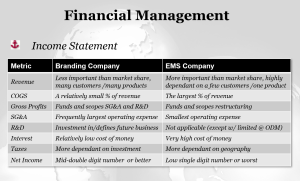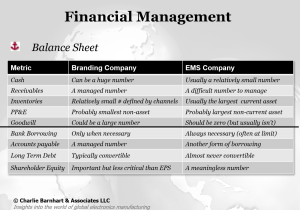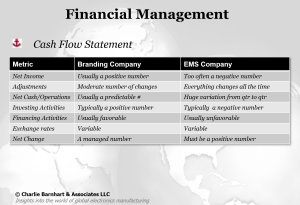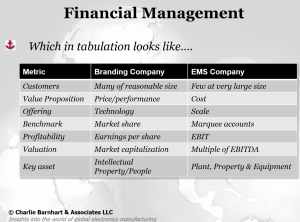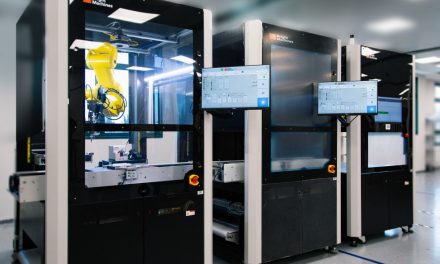The Differences Between OEM and EMS Financial Goals
Looking at the differences in the way OEM and EMS companies view their finances helps explain why the relationship can be challenging. This analysis, based on a presentation from 2011, helps shed some light on why there can be misunderstanding.
EMSNOW readers will recognize the name ‘Charlie Barnhart’ from past articles we have posted about his work. For example here>> and here>>. We worked with Charlie for many years and admired his brilliant analysis of the outsourcing business model. Sadly, Charlie passed away in July of 2022.
We came across a presentation from 2011 entitled, EMS Financial Metrics: An Insider’s View of What OEMs Need to Know to Mitigate Risks. This presentation was delivered to a client meeting of EMS and OEM executives. Some of the material could have been written about the industry yesterday; other points may be less applicable today. We thought we would throw this out there and see what EMSNOW readers think.
Charlie began this presentation with a point he made repeatedly in his business practice: ‘Suppliers are not your partners. They are independent for profit enterprises and while they need to be competitive and responsive to stay in business, they are not responsible for your financial success. Their sole responsibility is to their shareholders and stakeholders. Not yours.’
To make matters worse, he continued, the EMS industry operates on a completely different business model than their customers. From an OEM perspective, it often makes it look as if EMS companies are acting illogically, which in business presents a serious problem!
So his presentation was an attempt to outline the differences in OEM and EMS financial goals. Here are some relevant slides:
His notes summarized these charts in this way: OEMs are successful when they sell products that are so innovative and cost-effective from a price/performance perspective that they completely dominate their market sector. EMS companies, on the other hand, are successful when they have a few, very large, reasonably profitable customer relationships that fully consume their manufacturing capacity.
Those are two very different strategic objectives. He boiled it down in this chart:
Charlie summarized: Therefore, EMS companies are focused on controlling costs, managing assets, growing their top-line, and maximizing EBITDA.
Since we are not experts in GAAP accounting and financial analysis, we sent this to our colleague Dieter Weiss, founder of in4ma, who spends much of his time reading financial reports from European EMS. Here are some of his comments:
Even though most of Charlie’s statements are still correct, I disagree on a couple of points, at least for European EMS.
The recent semiconductor crisis, with the resulting bull-whip effect, caused inventories to double for European EMS and global EMS/ODM. This is now the EMS’ largest current asset and its biggest problem.
We still see too many companies in Europe with a negative net income, running between 10 and 20%. In 50% of cases, it is not just a single year but many consecutive years. It normally takes about eight years before management realizes that even personal guarantees cannot save the business. Hope prevails over logic.
In my opinion – and here’s where I disagree with Charlie – it is an extremely dangerous path for an EMS to be dependent on a ‘few, very large, reasonably profitable customers.’ Here the very big and global EMS have changed their strategy to try to make sure that the dependency on A-customers does not exceed 20-25%. The smaller ones have in some cases dependencies of up to 60% and if this customer base all of a sudden changes strategy, or demand dries up or the company just realizes that they fell for the chip crisis and now have their warehouse filled, the dependent EMS is in serious trouble. The same can happen with some market segments, specifically automotive.
EMS companies need to differentiate themselves to avoid becoming commoditized, a phenomenon Charlie identified very early on. We will share more insights from this presentation in the very near future. Stay tuned!
We would love to hear from others who have analyzed these issues. What do you make of Charlie’s thinking? Contact us by email to share your opinion on this: jread@emsnow.com or emiscoll@emsnow.com.


